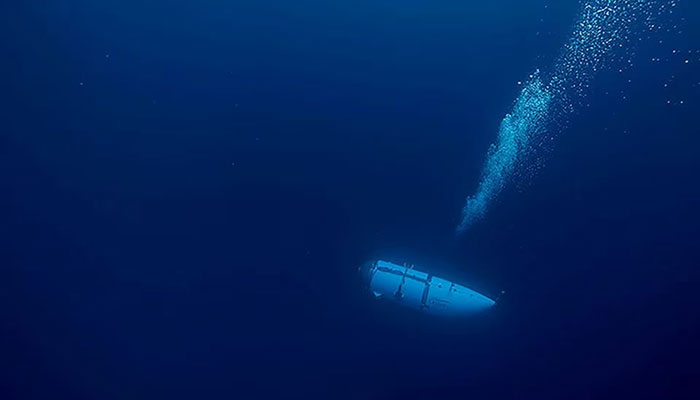Titan submersible: Expert says industry should learn lessons
Titan not being safety certified is a cause for concern, says Marine biologist David Mearns
June 22, 2023

As the US, French and Canadian authorities race against time to save the crew members of the missing submersible which has only hours of oxygen left, marine biologist David Mearns has urged the tourism industry — involved in Titanic exploration — to learn lessons from these incidents.
The oceanographer who is also known as the shipwreck hunter told BBC: "I certainly feel that now an investigation obviously should happen."
"This sort of thing we cannot allow to happen, and my industry needs to look in on itself and reflect on bringing passengers to such remote locations and such great depths because if things go wrong, there are very, very few options to make a recovery," the expert said who also helped to solve a number of maritime mysteries.
He also underlined that in hindsight, the fact the Titan was not safety certified is a "cause for concern".
"Would I choose a vessel without a classification? It’s not even allowed. I think that answers that" he added.
The missing submersible Titan lost contact with the world Sunday after an hour and a half into the sea — nearly 1,450km east and 643km south of Newfoundland — with five people onboard.
The OceanGate-owned Titan was launched from the Polar Prince — the submersible’s mothership — at 08:00 local time and was thought to come back to the sea surface at 15:00. Instead, it lost contact.
According to the US Coast Guard, they were intimated about the missing submersible after eight hours.
In the latest update, a Canadian search plane detected some underwater banging or noises with deep-sea experts saying it is hard to determine what these noises might be.
However, according to media reports, it is suggested that it could be short, sharp, relatively high-frequency noises by hitting a hard object against the end of the sub.
Authorities are also searching through the air in case of submersible emerged on the surface.
What is the submersible 'Titan'?
The submersible — named Titan — is capable of carrying five people including one pilot and going deep into seawater of 4,000 metres, allowing the crew members to inspect, conduct deep sea surveys, research and other underwater tasks.
OceanGate notes that Titan makes "innovative use of modern materials” to be “lighter in weight and more cost-efficient to mobilise than any other deep diving submersible." The materials the company is referring to are carbon fibre and titanium.
Titan’s length is 6.7 metres, width 2.8 metres and height 2.5 metres, as per OceanGate. It has 10,432 kilograms of weight and has a payload capacity of up to 685 kilograms.
Its four innerspace 1002 electric thrusters are capable of propelling the vessel to a maximum speed of 3 knots (around 5.5 kilometres per hour) underwater.
It has the capability to keep the crew members supplied with oxygen for up to 96 hours.
According to the company, the submersible uses a proprietary “Real Time Hull Health Monitoring” (RTM) system, which, provides “an unparalleled safety feature that assesses the integrity of the hull throughout every dive.”
Despite all-out efforts by the three countries combined, it remains to be seen when the submersible is found and it remains too early to say.









